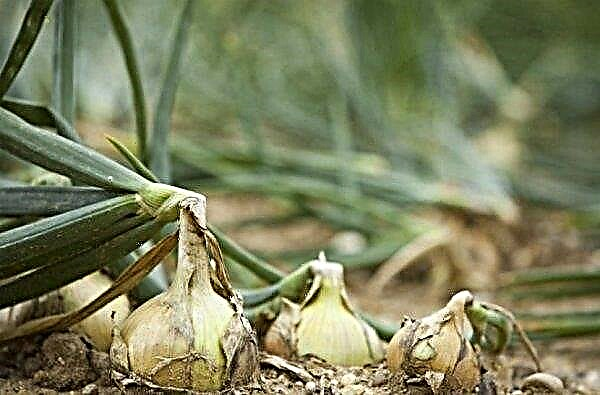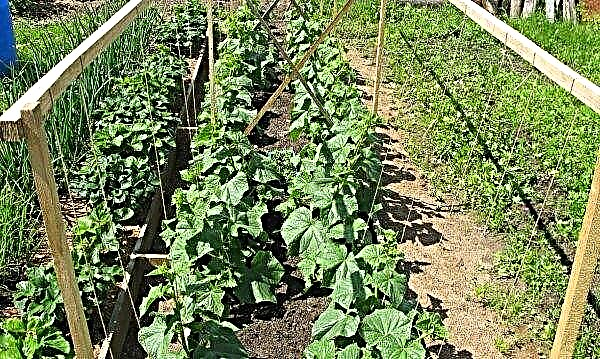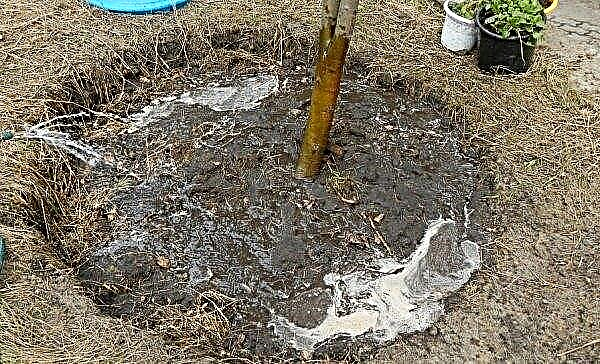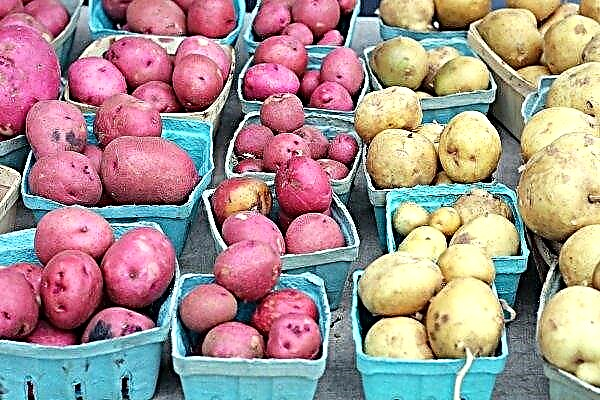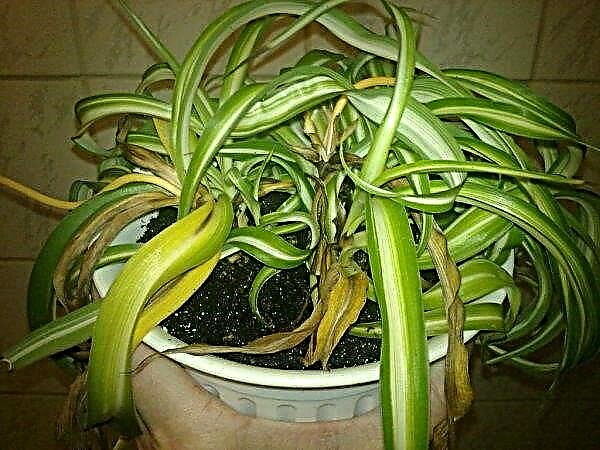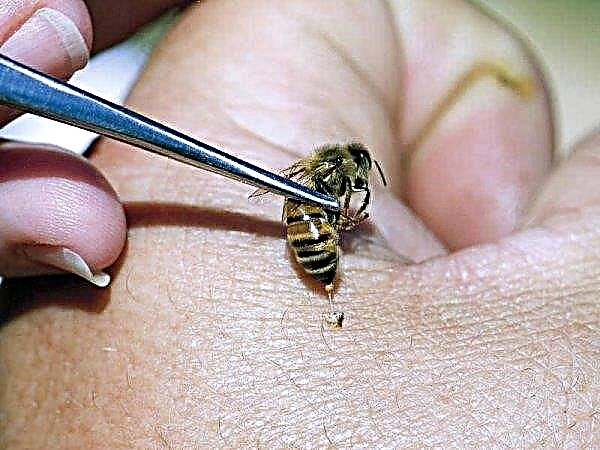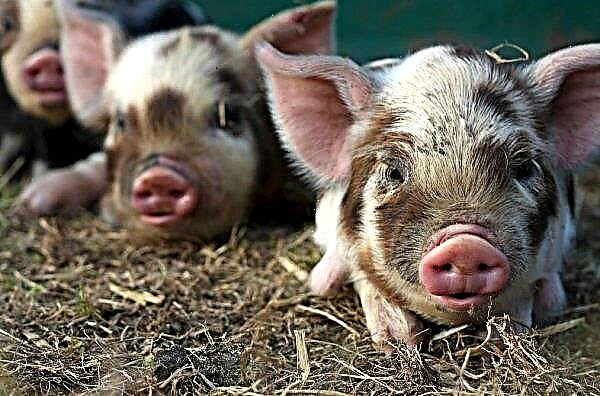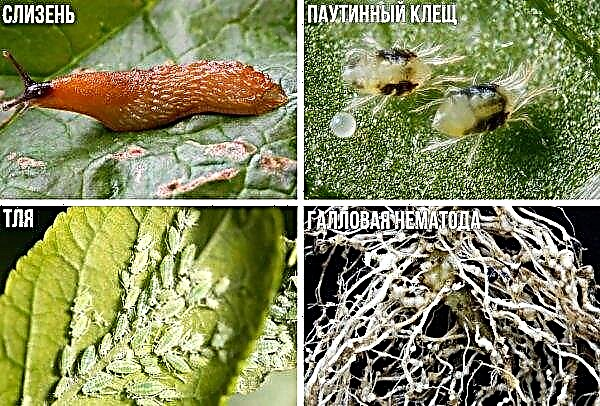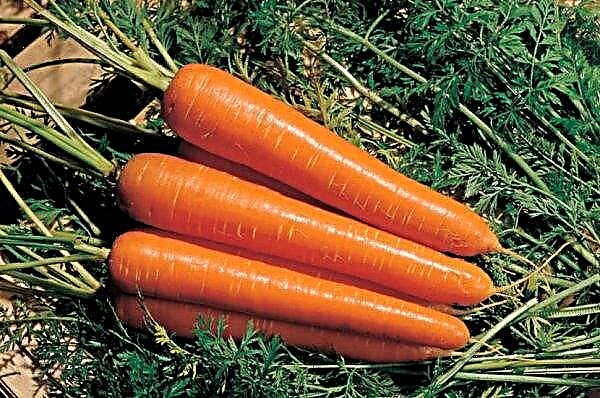The question of whether it is possible to plant cabbage before the onset of winter is relevant for summer residents and rural residents. For many vegetable growers, planting cabbage in the late autumn is a curiosity, but experienced gardeners often use this method of cultivation. About whether it is possible to sow cabbage and when to do it before winter, whether the culture is afraid of frosts and whether a vegetable grows in such conditions - read on.
The best varieties for planting
Only winter hardy mid- or late-ripe cabbage will survive winter sowing. The following varieties correspond to the specified criteria.
Did you know? TOancient Iberians introduced culture into the territory of modern Spain in the 3rd millennium BC. e.
White cabbage:
- Hope. Mid-ripening variety, ripens up to 155 days. Heads of cabbage are round or slightly flattened, of medium size, weight in the range of 2.5–3.5 kg. The leaves are dense, the color is gray-green, there is a moderate waxy coating. The structure of the sheet is heterogeneous, the edges are wavy.

- Winter storm. Siberian late ripening variety, ripens 135–155 days. The average weight of a head of cabbage is 4.5 g; the shape is round. The leaves are dense dark green, there is a waxy coating. Heads of cabbage do not crack and are stored up to 8 months.
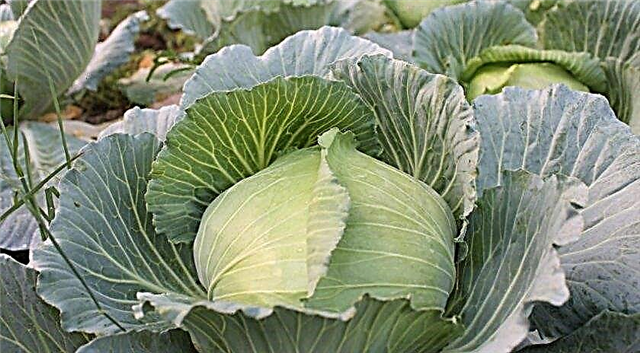
- Siberian. The variety ripens 125-140 days. Heads of cabbage up to 25 cm in diameter, rounded flat, the mass of one specimen is 3-5 kg. Leaves of medium density with a smooth surface, the color is light green. The edges of the leaves are slightly wavy, a waxy coating is observed. From 1 m² gardeners harvest 11–13 kg of crop. The variety is light and transportable.

Red cabbage:
- Gako-741. The variety is medium late; mass ripeness occurs in 125–155 days. Heads are round in shape, sometimes flattened. Leaves are purple, folded with medium density. 2.4-6.7 kg of vegetables ripen per 1 m² of plantings. The fruits are stored without cracking, well tolerate the road.

- Stone Head-447. Cabbage of medium ripening. Massively, heads of cabbage ripen for 120–145 days. The shape of the vegetable is round, the weight of one instance varies from 1.1 to 2.6 kg. Leaves are purple-red, densely folded into a head of cabbage. 1.7-3.6 kg is harvested from 1 m² of crops. During storage, it can crack, but it transfers the transport well.

Sowing cabbage in the winter
When deciding on winter cabbage sowing, study the advantages and disadvantages of this method.
Did you know? Cabbage contains Vitamin U - An essential amino acid that the human body does not produce on its own.
Advantages
- Experienced growers call the following factors the advantages of planting this crop for the winter:
- vegetable ripening is accelerated for a period of 2 weeks to 1 month;
- seeds that survived frosts are resistant to low temperatures and infections;
- time saving - when planting in the autumn, you do not need to additionally process the beds in the spring and grow seedlings on the balcony;
- snow with the onset of spring melts and nourishes crops with moisture, because of which the probability of soil dryness disappears;
- According to gardeners, winter vegetables have a special pleasant taste.
Disadvantages
- Late landing also has several disadvantages:
- at low temperatures, part of the seeds die, so you need to sow almost 2 times more than usual;
- preparation of beds takes place after the completion of the main garden work;
- it is impossible to give an exact sowing date - it all depends on weather conditions, and a gradual change in climate does not make it possible to calculate dates in advance;
- probable winter thaws and spring frosts can germinate prematurely or spoil already planted seeds.
Landing technology
For successful sowing, it is important to adhere to the technology precisely. It is necessary to correctly prepare the seeds, beds and observe the planting dates.
Seed selection
Processing seeds for winter sowing is not necessary. The main thing is to use dry seed. For planting, harvest 20–40% more seeds than usual. Frost will surely destroy part of the crops, so the seed should be taken with a margin.
Landing time
The purpose of the gardener is to plant a vegetable in the winter to get a crop in the spring. Many growers are concerned about the question of whether it is possible to plant a vegetable immediately before winter in frozen ground. Because of the fear of cold weather, they sow in the early autumn. However, this is a mistake: if you sow seeds in warm soil, for example, in the month of September, vegetables will sprout before winter arrives, the first frosts will destroy the crop, and winter sowing will not make sense.
Important! In conditions of unstable weather, always pay attention to weather forecasts and choose the timing of sowing cabbage, based on the current situation.
Therefore, it is important that the vegetable does not begin to grow after planting. To do this, wait for winter frosts. It is impossible to answer exactly from which date it is best to sow cabbage for the winter. Soil temperature should not be higher than + 3 ° С. The main criterion is weather conditions:
The main criterion is weather conditions:
- in the southern regions it is better to wait until the end of November;
- landing in october for the middle band fraught with possible thaws, so November is also suitable for the dates;
- in the northern regions it gets colder earlier, and landing is possible here at the end of October.
Bed preparation
The soil should be prepared for sowing in September. Preliminary maintenance of the garden is as follows.
- Dig the site.
- Remove the weeds.
- Liming - add 10 kg of limestone to 10 m² of soil.
- Feed the soil with a mixture of 10 liters of manure, 1 kg of crushed coal and 200 g of superphosphate.
Gardeners determine the sowing pattern independently.
You can sow the seeds:
- into the furrows;
- evenly over the plot.

Tips from experienced gardeners
In preparation for planting cabbage before the onset of winter, it is better to properly study all the subtleties of this matter.
Important! When watering, every 1.5 weeks you need to pour 25 liters of water on the beds with sprouted cabbage. More frequent watering (every 4 days) involves up to 10 liters of water at a time.
Experienced gardeners tell about them, who have been harvesting for several years using this method:
- In order not to dig furrows in frozen ground, carry out work in September immediately after tillage.
- Harvest in advance the loose earth with which you will sprinkle seeds.
- Protect your planting from spring snow with sawdust, spruce branches, shields or spanbond. When warm, remove protection.
- When the seedlings rise, fertilize the plant with organic and mineral fertilizers.
- Thin out planting in spring.
- Watering spring seedlings should be uniform, with a frequency of 4 to 10 days.
 So, the method of winter planting cabbage has both advantages and disadvantages, and when it is carried out, many nuances must be taken into account. However, the matter will not be troublesome and will please a good harvest if you carefully study the technology of such planting in advance.
So, the method of winter planting cabbage has both advantages and disadvantages, and when it is carried out, many nuances must be taken into account. However, the matter will not be troublesome and will please a good harvest if you carefully study the technology of such planting in advance.






